| Home |
| Acknowledgments |
| Conventions |
| Glossary |
| Maps |
| References |
| Links |
| Articles |
| Thumbnails |
| Species
list |
| Family |
| Next
species |
Additional Photos
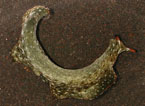
underside

parapodia

sedentary form

intermediate
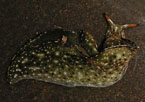
dark

young

senescent?
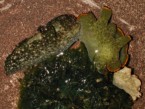
feeding
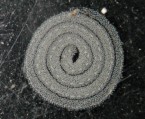
egg mass
_______________
GALLERY

Elysia marginata (Pease, 1871)
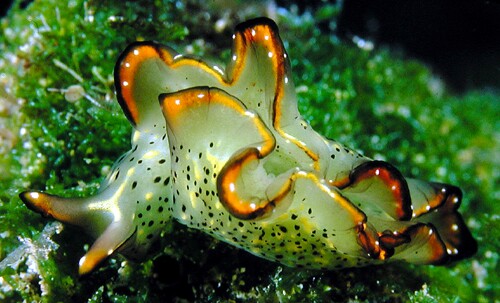
| Maximum size: about 76 mm
(Hoover, 2006). Identification: This is a highly variable species with sedentary and migratory forms. The sedentary form has tall, thin parapodia containing elaborate ramifications of the digestive gland. The parapodia usually meet in a more or less continuous line without obvious chimneys and are opaque-olive with cream patches and black spots. There is a continuous black marginal line and an orange submarginal line punctuated with white spots. The rhinophores are opaque-olive with orange and black tips. Occasional animals may lack most of the green pigment and much of the marginal black line (perhaps, due to chloroplast loss with senescence?). The migratory form (shown above) is usually smaller, seldom exceeding 25 mm, with lower and proportionately thicker parapodia that are typically held in three chimneys. Unlike in the sedentary form, they contain relatively few branches of the digestive gland and usually appear translucent-cream. The black marginal line is variable in width and may be absent between the chimneys while the cream and black spots are proportionately larger. Small juveniles have irregular, opaque-white blotches rather than cloudy cream spots. Natural history: The sedentary form of Elysia marginata is commonly found in beds of the green algae Bryopsis, often occurring in mixed populations with the sedentary form of Elysia rufescens. Such Bryopsis beds usually grow in protected to moderately exposed back reef locations at depths of < 1 m (3 ft). Mature animals show little change in behavior day or night.(Note 1) The migratory form is moderately rare on rocky bottoms in moderately protected to exposed locations at depths up to 12 m (39 ft). Mature animals are diurnally active but may rest in the open at night. We've observed the sedentary form feeding on Bryopsis in dishes. A 15 mm animal laid a tightly coiled, white egg mass with evenly spaced "dashes" of opaque white pigment on its upper surface. The eggs hatched in about 6 days in the laboratory. Distribution: Big Island, Maui, Oahu, Kauai, French Frigate Shoals and Midway (also Johnston Atoll): widely distributed in the Indo-Pacific Taxonomic notes: Elysia marginata (Pease, 1871) was originally lumped with Atlantic animals under the name Elysia ornata (Swainson, 1840) and is listed in many sources under that name including Kay, 1979, and Hoover, 1998 & 2006 (corrected in 2019 printing). Elysia grandifolia Kelaart, 1858 might also be a synonym (see the Sea Slug Forum for further discussion). It's referred to as the "ornate sap-sucking slug" in Hoover, 1998 & 2006 and was probably first reported from Hawaii in Pease, 1860 (as Pterogasteron ornatum). There's some possibility that there are two species lumped under this name in Hawaii. Photo: Mike Severns: migratory form; 25 mm: found by CP; Maliko Bay, Maui; May 31, 1992. Observations and comments: Note 1: The tall parapodia of sedentary animals observed on Bryopsis (at Black Point, Oahu) were entangled in the algae making the animals difficult to extract. When collected, they appeared to have more difficulty crawling in a dish than most species. Also, there was no obvious damage to the algae in the field despite the relatively dense population. That suggests the sedentary form may be an adaptation to a preferred host with the animals "sacrificing" mobility in order to increase the surface area available for photosynthesis by retained chloroplasts. |
| Thumbnails |
Species
list |
Family | Next species | Top |